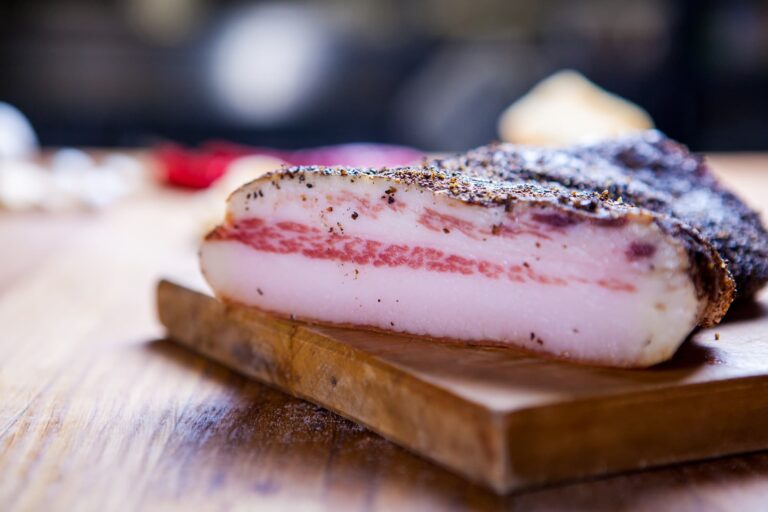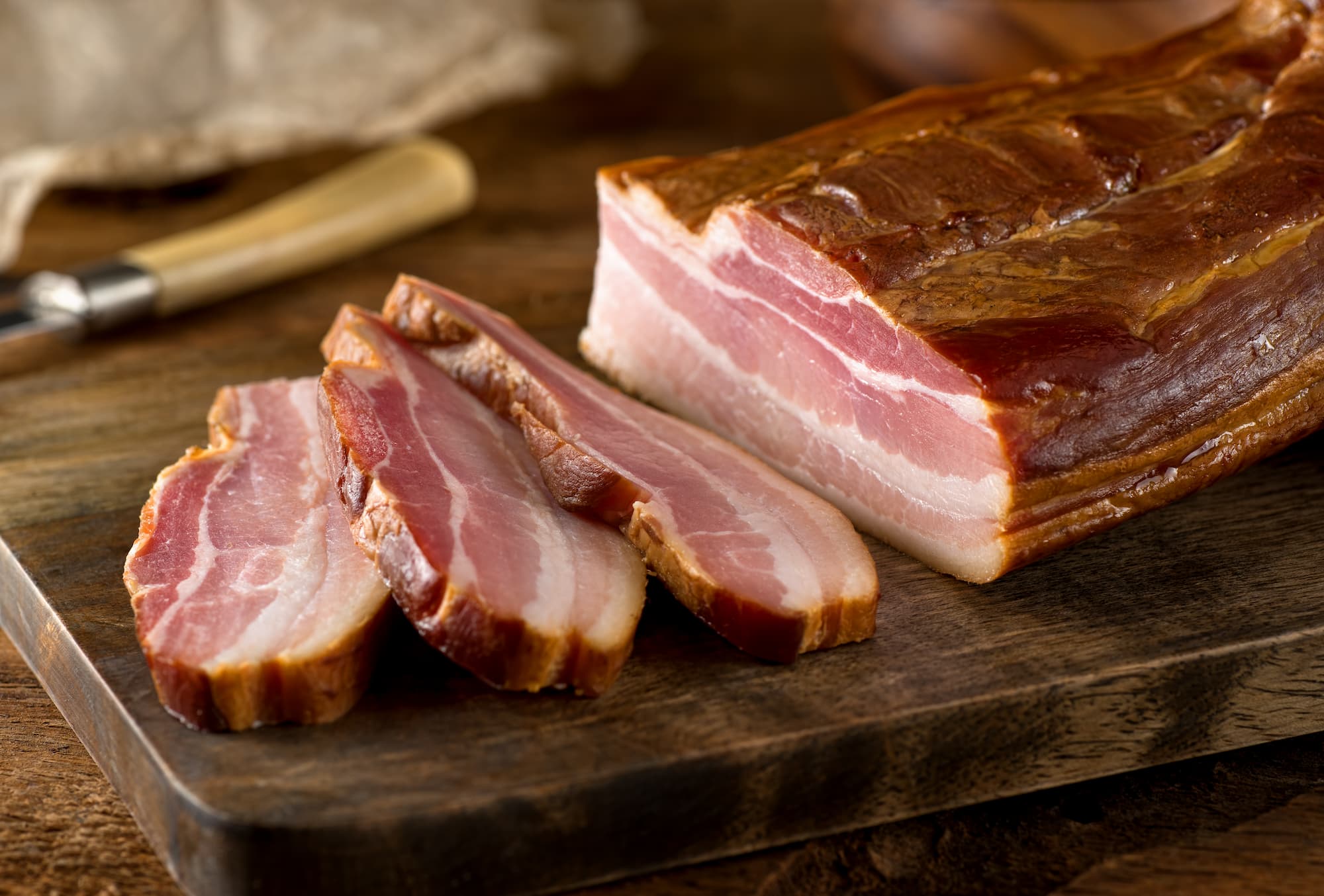Adored by everyone, cured pork products bring a lot of flavor to the table and are very popular in many regions of the world. Similar to bacon, guanciale and pancetta are the cured pork stars of Italian cuisine.
What’s the difference between guanciale and Pancetta, and which one should be used in carbonara sauce? To answer that question, let’s learn more about the origins of carbonara and look at how guanciale differs from pancetta.
Partenope Ristorante in Dallas, TX, uses both in their menus.

Where Did Carbonara Come From?
Carbonara is a simple sauce with a complex history. Made of eggs, cured pork, grated cheese, and black pepper tossed with pasta, the sauce must be perfectly blended to create a creaminess that incorporates all the flavors. There is some disagreement about when, where, and who first developed carbonara, however.
The Italian word carbonara translates to “in the manner of coal miners.” Some credit coal miners or a secret society of charcoal burners called “Carbonari” with the invention of the dish. The simple ingredients used in the recipe would have been easy for them to come by, with the visible black pepper flecks on the pasta representing coal.
Another theory on the origins of carbonara points to the 1940s, when American allies helped get German forces out of Italy post-war. By distributing rations to Italians that included powdered eggs and bacon, the soldiers may have influenced the invention of carbonara.
Of course, there are other clues concerning the history of carbonara. One focuses on a famous restaurant in Rome called La Carbonara, opened in 1912 by a coal seller. Food historians found evidence of recipes with beaten eggs, cheese, and pepper, but without the pasta, in a 19th-century Neapolitan cookbook written by Ippolito Cavalcanti.
No matter how it began, carbonara is one of the most beloved of all Italian specialties.
Pancetta
Pancetta is made from the belly of the pig, so it’s a less fatty product than guanciale. More expensive than bacon, its curing process is time-intensive. Typically soaked in salt brine for a few days before being seasoned with spices and herbs to infuse the meat with additional flavor, it is then aged for three weeks or longer. Pancetta may be smoked but it is usually not. It comes sliced very thin.
Partenope serves pancetta in the Elenucia pizza (pancetta conserve, mozzarella, shaved Brussels sprouts, Calabrian chili) and the Gladiator pizza (pancetta, smoked mozzarella, tomato sauce, sautéed peppers, sautéed onions, Calabrian chili, basil) at the Richardson, TX, location.
Guanciale
Guanciale is made from the cheek, or jowl, of the pig, which is less lean than the belly. A higher fat content gives it a rich and smoky flavor and a softer texture than pancetta. The fat helps to emulsify the sauce to create the creamy texture we all know and love. It is cured with some combination of salt, pepper, sage, rosemary, and garlic before being allowed to age for several months.
Many say that the key to true carbonara is guanciale, not pancetta. The Spaghetti Alla Carbonara at Partenope is made with guanciale, egg yolk, Parmesan, pecorino, and black pepper.
Taste the Difference for Yourself
The rich flavors of both guanciale and pancetta can greatly elevate the flavor of a dish. Experience the difference between the two for yourself at Partenope Ristorante. Our authentic dishes using these ingredients pair well with our extensive all-Italian wine list.
Contact us today to reserve a table for an intimate evening or dinner with friends. We are a premiere destination for Verace Pizza Napolitana – true Neapolitan pizza.
View our Dallas or Richardson dinner menu.
BOOK IN DALLAS BOOK IN RICHARDSONCONTACT US
Image Source:
Foodio/Shutterstock
Epic Vision/Shutterstock
